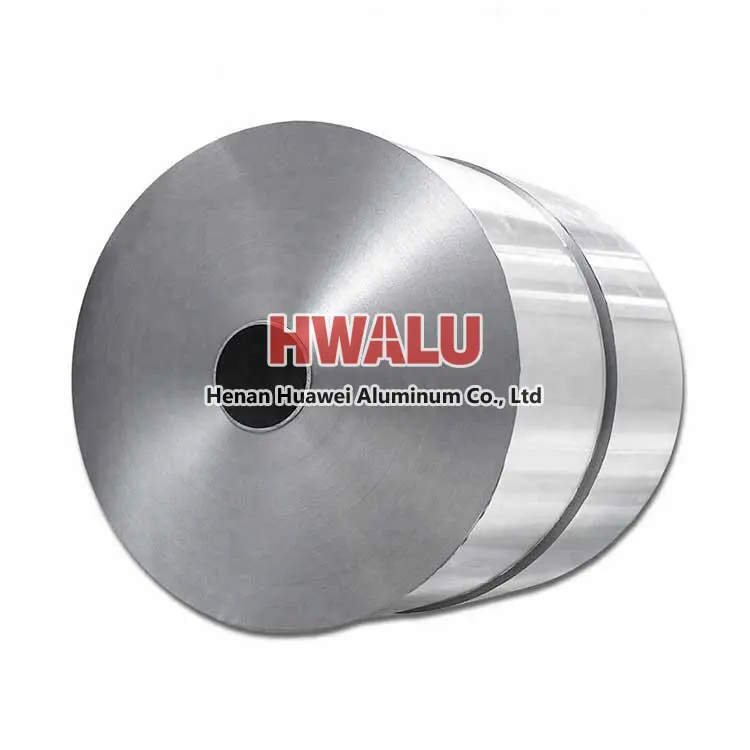Single zero aluminum foil refers to aluminum foil with a thickness between 0.01mm ( 10 micron ) and 0.1mm ( 100 micron ). 0.01mm ( 10 micron ), 0.011mm ( 11 micron ), 0.012mm ( 12 micron ), 0.13mm ( 13 micron ), 0.14mm ( 14 micron ), 0.15mm ( 15 micron ), 0.16mm ( 16 micron ), 0.17mm ( 17 micron ), 0.18mm ( 18 micron ), 0.19mm ( 19 micron ) 0.02mm ( 20 micron ), 0.021mm ( 21 micron ), 0.022mm ( 22 micron ...
How to define light gauge aluminum foil? Light gauge aluminum foil usually refers to aluminum foil with a thickness of less than 0.01mm, that is, aluminum foil with a thickness of 0.0045mm~0.0075mm. 1mic=0.001mm Example: 6 mic aluminum foil, 5.3 mic aluminum foil Aluminum foil with thickness ≤40ltm can also be called "light gauge foil", and aluminum foil with thickness >40btm can be called "heavy gau ...
Introduction of 8006 alloy aluminum foil 8006 alloy aluminum foil is a non-heat treatable aluminum alloy. The 8006 aluminum foil product has a bright surface and is degreasing clean. Especially suitable for making wrinkle-free lunch boxes. Huawei Aluminum's 8006 aluminum foil adopts hot rolling method, and the tensile strength is between 123-135Mpa. Aluminum 8006 alloy composition 8006 aluminum alloy is an ...
What Is Food Packaging Aluminium Foil Roll 8011 As we all know, aluminum foil is widely used in our daily life, especially in the field of food packaging. Aluminum foil roll 8011 is a common food packaging material. 8011 aluminum alloy is a high-quality aluminum alloy with good ductility, strength and corrosion resistance. This type of aluminum foil is commonly used for food packaging. 8011 aluminum fo ...
Special applications of aluminum foil Aluminum foil is a type of product of aluminum alloy metal. It is made by directly rolling metal aluminum into thin sheets. Its thickness is usually less than or equal to 0.2mm. Like the thickness of a piece of paper, aluminum foil is also called aluminum foil paper. Aluminum foil has many uses, and common scenes include food packaging, pharmaceutical packaging, etc. At the ...
what is 1145 alloy aluminum foil? 1145 alloy aluminum foil and its sister alloy 1235 have a minimum aluminum content of 99.45%, and the chemical and physical properties are almost the same. Occasionally, some production batches can be double-certified for 1145 and 1235 alloys. Like 1100 aluminum alloys, both are considered commercially pure alloys with excellent formability. Due to the high aluminum content, ...
1) Surface treatment (chemical etching, electrochemical etching, DC anodizing, corona treatment); 2) Conductive coating (surface coating carbon, graphene coating, carbon nanotube coating, composite coating); 3) 3D porous structure (foam structure, nanobelt structure, nano cone mechanism, fiber weaving mechanism); 4) Composite modification treatment. Among them, carbon coating on the surface is a commo ...
Material selection: The material of aluminum foil should be high-purity aluminum without impurities. Choosing good quality materials can guarantee the quality and service life of aluminum foil. Parent roll surface treatment: In the early stage of aluminum foil production, the surface of the parent roll needs to be cleaned and decontaminated to ensure a smooth and flat surface and avoid oxide layers and ble ...
Melting Point Of Aluminum Foil Do you know what melting point is? Melting point, also known as the melting temperature of a substance, is a physical property of a substance. Melting point refers to the temperature at which a solid substance changes into a liquid state. At this temperature, the solid begins to melt, and the arrangement of its internal molecules or atoms changes significantly, causing the subst ...
Aluminum foil is recyclable. Due to the high purity of aluminum foil materials, they can be reprocessed into various aluminum products after recycling, such as food packaging, construction materials, etc. Recycling aluminum, meanwhile, is an energy-saving process that involves melting down aluminum scrap to create new aluminum products. Compared to producing aluminum from raw materials, the recycling process of a ...
1060 aluminum foil is a common type of 1000 series aluminum alloy products. It is a high-purity aluminum foil with an aluminum content of at least 99.6%. This type of aluminum foil has many advantages and is suitable for home use. 1060 aluminum foil can be used well for household aluminum foil packaging. Performance advantages of 1060 alloy as household foil: 1. Good corrosion resistance: 1060 aluminum foil ...
Aluminum foil jumbo roll: Ideal for cooking or baking large dishes such as roasts, turkeys or baked cakes as it covers the entire dish with ease. Ideal for wrapping leftovers or storing food in the freezer, as you can cut the desired length of foil as needed. Aluminum foil jumbo rolls can last for a long time, which can save costs in long-term use. Small rolls of aluminum foil: More portable an ...










